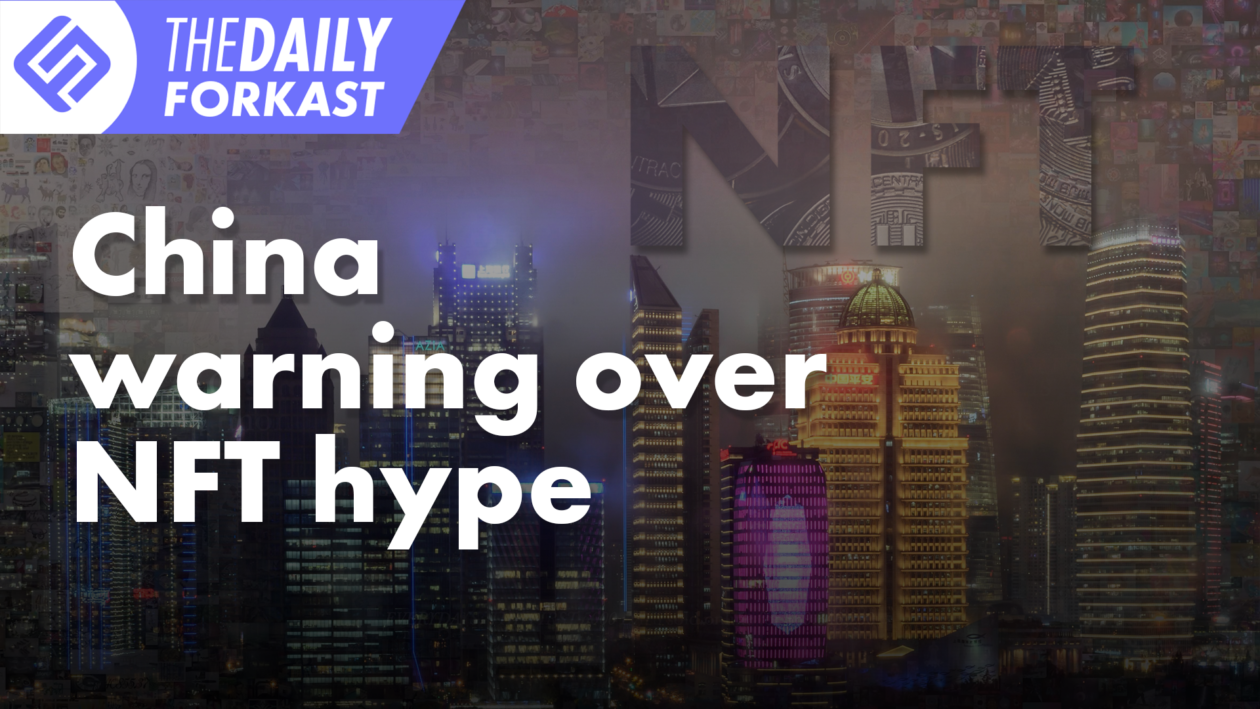People’s Bank of China outlines e-CNY problems to be solved.
China opinion piece voices warning over NFT hype.
Solana competitors on the rise.
We’ll have more on those stories — and other news shaping the cryptocurrency and blockchain world — in this episode of The Daily Forkast, September 13th .
Transcript
Welcome to The Daily Forkast, September 13th, 2021. I’m Angie Lau, Editor-in-Chief of Forkast.News, covering all things blockchain.
So we’ve been talking about this for a while – China’s digital currency project has been developing rapidly, but now the deputy governor of the People’s Bank of China says there are some problems that still need to be resolved. In a speech, Fan Yifei singled out regulatory rules and payment systems as areas requiring further attention. So that’s got our attention. We’ll talk about that and more coming up.
Let’s get you up to speed from Asia to the world.
First up, speaking at the China Digital Finance Forum, the PBOC deputy governor laid out plans for tackling development of the country’s digital currency.
Issues to be ironed out include supporting connections between the E-CNY and traditional payment systems and developing regulatory rules that differ from those already in place for physical currency, by “breaking what should be broken and restraining what should be restrained.”
Forkast.News Timmy Shen has more on what that means for plans going forward.
While the speech did not mention any physical glitches or problems with the E-CNY, it makes clear the system should be secure and user friendly.
Richard Turrin, a fintech consultant who recently published “Cashless- China’s Digital Currency Revolution”, told Forkast.News the issues include setting boundaries for various types of payment.
For high-value transactions that banks currently undertake using the country’s RTGS, or a “high-value payment system”, it will mean specific and endpoint requirements for security.
While for everyday users, one of the biggest issues will be the limits placed on value based transfers. These are smaller payments, such as those made via phone-to-phone transfers without a network, or those which many would see as being most cash-like and therefore vital to rural users.
Turrin also says it’s clear the PBOC does not want to disrupt existing payment platforms like Alipay and WeChat Pay, instead developing sub-wallets to allow seamless E-CNY use.
All of these will be critical to ensure a smooth user adoption.
For Forkast.News, I’m Timmy Shen, Taipei, Taiwan
Meanwhile, could we be seeing the first rumblings of a backlash against NFTs in China?
An opinion piece in the state owned newspaper, The Securities Times could be just that, as its headline states, “Blind hype has biased the value of NFTs.”
The article criticized NFTs as a massive hype, giving Justin Sun’s NFT purchase of an avatar for over US$10 million and the US$69 million paid for Beeple’s “Everydays” as examples of the NFT market being a huge bubble.
The article went on to suggest that in future more real case scenarios for NFTs should be focused on, like using them to record the sale of real assets such as cars or real estate.
Such articles could be a worry as well for China’s tech giants, who have fully embraced the NFT phenomenon – Alibaba’s auction platform sold its first batch of NFT paintings in May, and in June Alipay sold 32,000 NFT artworks within a day.
We’re going to be keeping a close watch on what happens next in this hugely popular market in China.
And finally, today, interest in Solana has been off the scale of late, but with a run on second tier coins, what might the next big altcoin be?
Forkast.News, Lachlan Keller takes a look.
Last week was quite the week for cryptocurrencies, with a price pullback after El Salvador’s adoption of Bitcoin, the launch of Cardano‘s long-awaited Alonzo upgrade and a Solana on a tear. But with the dust settling, most of the crypto markets started the Asian trading week on a downward trend.
Solana has staked its claim as a significant contender to Ethereum in the NFT ecosystem, but should both now be looking over their shoulders towards the new kids on the block?
With tokens like Polkadot, Cosmos and Avalanche are among those bucking the trend, gaining around 15% in the 24 hours to Monday morning Asia time, it seems investors are looking towards the next coin to see its breakout moment.
One expert told Forkast.News while market psychology is driving many investors to look for coins with large multipliers between their market cap and that of Ethereum, looking across various protocols is a wise move.
“It’s not betting everything on the one horse, as in the case of Solana, because as a crypto market teaches us time and time again, take profits because there is never, ever going to be a perpetual trading line upwards.”
Speaking to Forkast.News, Michael B. Greenwald, director of Digital Asset Education, Tiedemann Advisors, and former U.S. Treasury attache to Qatar and Kuwait, says while he’s not sure what we’ll see next in terms of central banks adopting cryptocurrencies, he sees individual use cases as being vital in the future.
“People will use Bitcoin and Ethereum and Cardano and others alongside stablecoins and a digital dollar or a digital euro for specific purposes. Some may be for art, some may be for transacting for small businesses, but each of them will have a different purpose.”
And Stefan Rust, CEO and founder of Hydrogen X, told us all of these contenders benefit from being Ethereum virtual machine compliant.
But with more global economies getting into tokenomics. Eventually, all of these blockchains will suffer from getting blocked up.
For Forkast.News, I’m Lachlan Keller.
And that’s The Daily Forkast from our vantage point right here in Asia. Visit Forkast.News. I’m Editor-in-Chief, Angie Lau. Until the next time.

